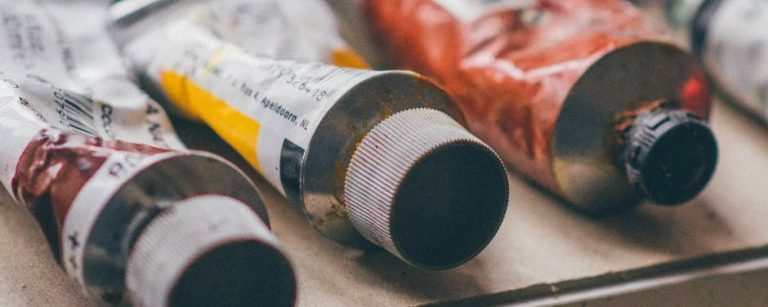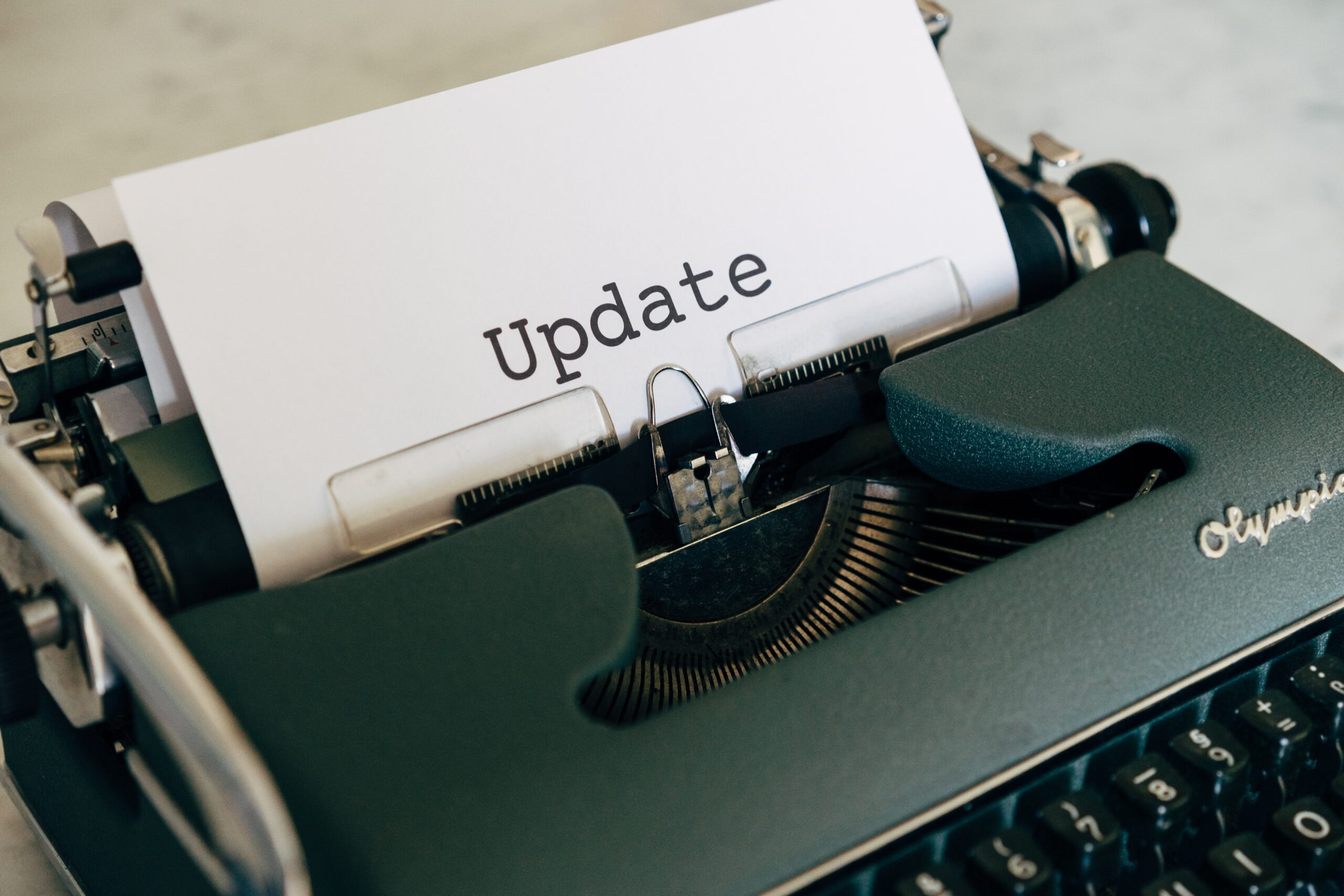
Oil painting might be intimidating for beginners. There are paints, tools, brushes, mediums etc. Compared to watercolour and acrylic painting, oil painting may seem more complicated to deal with. It was the case for me when I first started learning oil painting. However, after a while, I got used to the oil painting process and it became more and more enjoyable.
In this post, I will be showing you the tools and materials you need to start oil painting.
Oil paint

Oil paints are, as the name suggests, oil based. They come in different qualities, for beginners who are just starting out, student grade oil paints are more suitable for experimenting as it is cheaper. However, student grade oil paint is not as pure as artist grade oil paint thus colour mixing may not be very accurate.
There are many different brands of oil paints out there, some popular ones are Winsor & Newton, Daler Rowney, Gamblin and many more. Oil paint from different brands may have different properties to them. For example, in my experience, Winsor & Newton has a slower drying time compared to Daler Rowney. Each brand may also provide both student grade and artist grade paint. If you’re not sure which colours to buy, a simple beginner set would be a good start.
Brushes

Oil painting brushes come in many shapes and sizes. The most common types are round, flat, filbert, fan and mop. Different brushes can be used to create different effects.
A good brush will bounce back to its original shape after bending. If they are not properly taken care of, the ends may start splitting and they may start losing their original shapes. However, don’t throw away all your ruined brushes as they may still be able to create some interesting effects. During a painting session, you will clean your brushes on brush cleaners when trying to change colours. After your painting session, you should wash all your used brushes with soap and water, make sure all the paint are washed out of the brush before you lay them out to dry.
Some tips to properly keep your brushes are to not store them bristle up while they are still wet. It is also not advised to keep your brushes soaked in solutions for a long period of time.
Brush cleaner

Oil paints are oil based. So unlike watercolour or acrylic paints, brushes cannot be cleaned just by dipping them in water. Special brush cleaners are needed to clean the oil paint off your brushes. These solutions can be chemically harmful and nasty on the nose. They must be used carefully and disposed of properly after use. They must not be poured down the drain.
Some common brush cleaners are Monolisa Odourless Mineral Spirit, Zest-It and Gamsol Odourless Mineral Spirit.
I use Zest-it, it is relatively less harmful and has a citrus smell.
A tip for not wasting these brush cleansers is that after each use, leave the mixture of solution and paint overnight. In the morning, you’ll realise that all the oil paint has sunk to the bottom, leaving the rest of the solution clean as new, ready to be used again. You can either reuse the solution as it is with the paint at the bottom or pour out the clear solution and clean out the residue paint at the bottom. Being a lazy person, I’ve obviously opted for the first option.
Mediums

Mediums are mixed with oil paints to produce different effects. Different mediums can change the flow, drying time, thickness, consistency and transparency of your paint. They can also change the type of finish for your paintings.
When you first squeeze out some paint straight out of the tube, you’ll realise that the paint is semi-solid. If you paint straight on the canvas using that paint, you will find it difficult to spread the paint out to a large area.
Some mediums are used to mix with oil paint to make them more liquidly and improve its flow on the canvas, like a lubricant.
Some mediums can be mixed with paint for different painting techniques such as glazing, which is a technique that produces richer colours by painting a thin layer of transparent colour above another painted area.
Some examples of mediums are
- Linseed oil: increase the flow and drying time of your paint. It also makes your paint more transparent.
- Liquin: speed up the drying time of the paint and gives a glossy finish
Painting surfaces

There are many different painting surfaces that can be used for oil painting. The most commonly known is the stretched canvas, some other types are canvas paper, canvas panels and various types of hardboards.
In the long run, oil paint may react with painting surfaces and eat away the surface. If your canvas is not pre-primed, it is a good idea to prime your canvas before starting to paint. Priming your canvas gives a separating layer between the painting surface and oil paint, it protects the painting surface, it may also let your paint appear more vibrant and provides a better surface to paint on.
I use 2 coats of white acrylic gesso to prime my canvas. After the 2 coats are dried, I sand them slightly to produce a smoother painting surface. If that sounds like too much work, you can always get pre-primed canvases but at a higher price.
Palette

A palette is where most of the paint mixing occurs. You squeeze tubes of different coloured paint on the palette and mix them together to create millions of different colours!
A glass palette is ideal for oil paint as it is easy to clean and when you scrape dry paint off of it there won’t be a lot of scratches like plastic or wooden ones. However, a glass palette may be hard to find or expensive.
I use disposable palettes. They are like pages of a notepad and I just tear one page off, use it as a palette and throw it away after I’m done with it. It’s convenient and the price is reasonable, not so eco-friendly though.
Palette knife

Palette knives can be used to mix paint, it is generally easier to mix large amounts of paint with palette knives than with brushes.
They can also be used to paint directly on the canvas. There are styles of painting where thick layers of paint are painted onto the canvas using a palette knife, this can create dimensionality and produce different effects.
So these are the basic tools and materials for oil painting. It may seem scary at first but once you get the hang of it I’m sure you will enjoy oil painting too!
You may also be interested in:





15 Responses
I am in love with your work. You are so talented.. The skull painting is beautiful
Thankyou for the compliments!
I have a really good friend who is absolutely crazy about oil paintings! He does some amazing art, just like you.
This is a subject that has always fascinated me, but as you mentioned above it can be a little “intimidating for beginners”.
I am glad I came across your website because you have really given me some great product tips, and useful information on how to actually get started. I am not as skillful as some, but at least it will be super easy for me to get started on my oil painting venture, thanks to your helpful oil painting post.
Thanks a ton!
– Jay.
Hi Jay! Thankyou for your comment. I hope you will enjoy oil painting! I’m glad my post has helped you on getting started. Don’t be afraid to try things out and make mistakes. Have fun! 😀
Hello Stephanie,
I love this article as it really speaks to the artist in me and what all is involved in oil painting. My experience is mainly in acrylic paints as I have found them easy to work with and being water based easy to clean. I have always seen oil paintings as the gold standard of artist work on account of the technique and skill required to produce a good quality piece.
Would you say that making the transition from acrylic to oil based paints will be possible or does one have to relearn new techniques and essentially start from the beginning again?
Rich
It is definitely possible! I actually learned acrylic first and then I switched to oil painting. There are certain skills that are needed in both acrylic and oil painting. Eg: mixing colours and brush strokes. There will be differences and more things to take note of in oil painting but for me I think knowing acrylic painting first has helped in me learning oil painting compared to not knowing it at all.
I love painting and its a subject I took throughout school. However, I never did oil painting- it always looked a bit scary and very messy. I remember the girls who used oil had to wait hours and hours for their work to dry. But perhaps since I’m older and maturer its time to give it a try again. My sister still uses oil paints and she can’t understand how I’ve never tried it. Just seeing the images of your paints and the messy palette has got me in the mood of painting again. Perhaps I’ll give oil a try finally!
Great! Hope you enjoy it 😀
Yes oil painting can be intimidating for beginners, when I arrive at the oil paints and tools aisle in the shop i usually feel overwhelmed by all the different types of everything on offer, i usually end up walking away so this article is great for me to get some information.
Thanks for showing a simple beginners set of oil paints this was exactly what i needed!
Thank you for sharing with us this great post on oil painting basics.Painting is a nice hobby for talented people.I am happy that I found great tips on how I ca start oil painting step by step and how to select materials.
I didn’t have the chance to paint but I know that I can be a good painter if I give it a try.
Last week I hired people to paint my house because we are getting ready for christmas but I was helping them and I enjoyed it.
Painting can make people relaxed and happy .
I really love oil painting, so my question to you is that, just like you have just mentioned that it must not be poured on drains as it is harmful, How can i be sure that i am also safe from the odor… is it not having a long term effect on my respiratory system? If it has a long term effect to inhale it what can i use to be sure i am always safe and healthy.
Hi! For me I paint near a fully opened window and open another one nearby for ventilation. However some people may be more sensitive to the chemicals. Here’s an article I found on ventilation: here . Hope it helps!
Hi Mary! Oh, this is wonderful! I’m so glad I found your site! I like drawing and now want to experiment with oil painting. But as you have stated “It really seems scary at first!”
This post has been so useful to get me started with the tools and material I’ll need! And I’m also happy I have found somebody that talks a language I understand and is easy to follow! I’ll continue visiting your site for more! Thank you!
Glad you liked the post 🙂 thankyou!